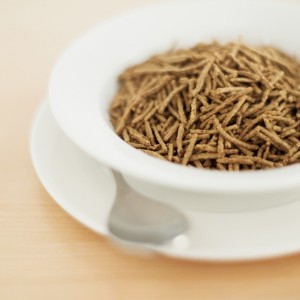Live a Longer Life: Eat More Fiber!
 Could fiber possibly be the Fountain of Youth? According to a new study that included data from almost one million people, those who ate the most fiber were 16 percent less likely to die than people who ate the least amount of fiber. The researchers also discovered that for every 10-gram increase in fiber intake, there was a 10 percent drop in any cause of death.
Could fiber possibly be the Fountain of Youth? According to a new study that included data from almost one million people, those who ate the most fiber were 16 percent less likely to die than people who ate the least amount of fiber. The researchers also discovered that for every 10-gram increase in fiber intake, there was a 10 percent drop in any cause of death.
Fiber tends to get overlooked, especially in the face of other “popular” nutrition stories about fat, gluten and the best diet to follow. But fiber is an important nutrient that plays a key role in health. It’s also a nutrient that most of us tend to fall short on.
What is fiber?
In simple terms, fiber is the part of plant foods, like fruits, vegetables and grains, that isn’t digested. Fiber is considered to be either soluble or insoluble. Soluble fiber dissolves in water. Insoluble fiber stays intact.
What does fiber do?
Fiber plays a big role in digestive health. It can prevent constipation, diverticulosis and hemorrhoids. But fiber does other things, too. For example, studies show that regularly eating fiber can help to lower blood pressure levels. And including soluble fiber in your diet can lower blood cholesterol levels which, in turn, may lower your risk of getting heart disease. More good news about soluble fiber: it may help lower blood sugar levels, as well.
There’s more! Researchers looked at eight different studies published between 1990 and 2012 and found that for each 7-gram increase in fiber intake, the risk of having a stroke was lowered by 7 percent. Also, fiber may lower the risk of getting colon cancer and can even lower the chances of developing diabetes. Knowing that fiber plays a big role in reducing the heavy-hitter causes of death, such as heart disease, stroke and cancer, it’s easy to understand why we all should make a point to include more of this nutrient in our diets.
How much fiber do we need?
Most Americans consume just 15 grams of fiber each day. According to the Dietary Guidelines for Americans, men need 38 grams per day, and women need 25 grams per day. Clearly, we’re falling short. Much of this has to do with eating too many processed and refined foods that have been stripped of fiber.
What are good sources of fiber?
When you put your mind to it, it’s actually pretty easy to get enough fiber. Here are the tops foods that contain fiber:
- Fruits: berries, pears, apples, oranges, mangoes
- Vegetables: broccoli, cauliflower, spinach, carrots, celery, tomatoes, avocado, potatoes
- Legumes: kidney beans, black beans, lima beans, chick peas, lentils
- Grains: brown rice, barley, corn, popcorn
- Grain foods: whole wheat bread, whole wheat pasta, oatmeal, cereals with 5 or more grams of fiber per serving
- Nuts and seeds: almonds, pecans, pistachios, sunflower seeds, pumpkin seeds, flax seed, chia seeds
Tips for adding more fiber to your diet:
- Go slowly! Adding too much fiber at once can make you feel bloated and gassy and give you cramps.
- Drink plenty of fluids when you increase your fiber intake.
- When reading the Nutrition Facts label on a food package, choose foods with at least 3 grams of fiber per serving.
- Switch over to whole wheat, oatmeal or rye bread. Look for a whole grain as the first ingredient on the ingredient list.
- Choose whole-wheat pasta instead of white pasta.
- Mix All-Bran, Fiber One or Bran Buds cereal with your favorite morning cereal.
- Leave the skin on your apples, carrots and potatoes.
- Bake with whole wheat or white whole wheat flour.
- Eat more bean-based meals, such as split pea soup, vegetarian chili or black beans and rice.
- Snack on nuts or seeds; stir them into yogurt or sprinkle them into your salad.
- Add ground flax seed to your oatmeal, soup or yogurt.
- Mix ground chia seeds into ground beef or ground turkey.

